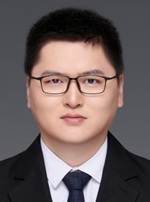SPECIAL SESSION
Special Session 4: Next-Generation Intelligent Perception and Connectivity for Low-Altitude, Embodied AI Scenarios
As the Low-Altitude Economy has been elevated to an unprecedented height as a national strategic emerging industry, we are witnessing the accelerated formation of a three-dimensional transportation and service network composed of unmanned aerial vehicles (UAVs), electric vertical takeoff and landing vehicles (eVTOLs), and various low-altitude intelligent agents. Deploying embodied intelligent agents in complex, dynamic, and high-risk low-altitude environments poses unprecedented challenges to the underlying sensing and connectivity technologies. The variable weather conditions, dense obstacles, and complexity of the electromagnetic environment in low-altitude scenarios make it difficult for a single sensing technology to achieve all-weather, full-domain precise environmental perception. Meanwhile, the high mobility and high-density collaboration of large-scale intelligent agents also pose severe challenges to the latency, bandwidth, reliability, and coverage of communication networks.
This session focuses on the above challenges and aims to bring together top global scholars, researchers, and industry experts to jointly explore and define the next-generation intelligent sensing and connectivity technologies for low-altitude embodied intelligence scenarios. We focus not only on single-point breakthroughs in sensing or connectivity technologies but also on innovative paradigms of their deep integration and synergistic enhancement—such as how disruptive technologies like Integrated Sensing and Communication (ISAC), multimodal fusion, and edge intelligence can collectively build a "digital sky network" capable of supporting the safe, efficient, and intelligent operation of future low-altitude societies.
Related topics: (此专题涉及的征稿主题)
- Fundamental Theories and Performance Boundaries of Integrated Sensing, Communication, Computing, and Control (ISAC-C) for Low-Altitude Networks
- Lightweight Multimodal Foundation Models and World Models for Low-Altitude Embodied Intelligent Agents
- Construction, Synchronization, and Evolution Theories of Low-Altitude Digital Twin Networks
- Integrated Sensing and Communication Waveform Design, Signal Processing, and Interference Coordination Based on 5G-A/6G
- Deep Fusion and Adaptive Alignment of Multimodal Sensing Data (e.g., Radar, Vision, LiDAR, Audio)
- Localization and Tracking Technologies Based on Passive Sensing and Opportunistic Signals
- Low-Altitude Network Architecture and Routing Protocols for Large-Scale Highly Dynamic Nodes
- Intelligent Resource Allocation and Mobility Management in Space-Air-Ground Integrated Networks
- High-Reliability and Low-Latency Remote Control and Telemetry Data Transmission Technologies for UAVs
- AI-Based Wireless Channel Modeling, Prediction, and Network Performance Optimization
- Ad-Hoc Networks and Swarm Communication for UAVs
- Collaborative Sensing, Path Planning, and Dynamic Task Allocation for UAV Swarms
- Autonomous Navigation, Obstacle Avoidance, and Interactive Control of Embodied Intelligent Agents in Low-Altitude Environments
- Security, Privacy Protection, and Anti-Jamming Technologies for Low-Altitude Intelligent Networks
- Public Benchmark Datasets and Evaluation Frameworks for Low-Altitude Multimodal Sensing and Communication Systems
- Innovative Application Cases and System Validation in Urban Management, Emergency Rescue, Smart Logistics, Precision Agriculture, etc.
Submit Method:
1, Submit it via the link: http://confsys.iconf.org/submission/icece2025 (after entering the link, click on the corresponding topic)
2, Send your manuscript to icece_conf@vip.163.com with subject "Submit+Special Session-4+Paper Title". (请通过邮件发送稿件,邮件题目:Submit+Special Session-4+Paper Title)
3, Submission deadline: December 05, 2025

Assoc. Prof. Wei Cheng, Northwestern Polytechnical University, China
Wei Cheng, Associate Professor at the School of Electronic Information, Northwestern Polytechnical University, Senior Member of the CCF, Member of the Preparatory Group for Intelligent Communication and Connectivity FIG under CCF CDF, and Member of the UAV Standardization Sub-Technical Committee of the Aircraft Owners and Pilots Association of China (AOPA-China). He also serves as a Young Editorial Board Member for Unmanned System Technology and Journal of Xi'an University of Posts and Telecommunications. His main research interests include air-space-ground integrated Internet of Things (IoT), radar signal processing, and airborne weather radar technology.
Assoc. Prof. Limeng Dong, Northwestern Polytechnical University, China
Limeng Dong, Associate Professor at the School of Electronic Information, Northwestern Polytechnical University, received his bachelor, master as well as Ph.D degree in 2012, 2015, 2019 respectively, from the School of Electronics and Information, Northwestern Polytechnical University, Xi’an, Shaanxi, China. During 2015 to 2017, he was once a visiting Ph.D student at the School of Electrical Engineering and Computer Science, University of Ottawa, Canada. During 2019 to 2021, he was a postdoctoral researcher in the Ministry of Education Key Lab for Intelligent Networks and Network Security, School of Information and Communications Engineering, Xi’an Jiaotong University, Xi’an, Shaanxi, China. He is now an associate professor in School of Electronics and Information, Northwestern Polytechnical University. His research interests include physical layer security of MISO, MIMO, cognitive radio, cellfree communications and reconfigurable intelligent surface aided wireless communications. He was selected for the top 2% of global scientists list released by Elsevier and Stanford University in 2024.

Senior Director, Fangxin Xu, Longsailing Semiconductor Co. Ltd., China
Fangxin Xu is a Senior Director at Longsailing Semiconductor Co. Ltd. and a Jiangsu Provincial “Double-Innovation”Ph.D. His research spans wireless communications, software-defined networking, IEEE 802.11 (Wi‑Fi) standards, and AI-assisted communications. He is a member of IEEE and a senior member of CCF, has published 20+ papers, holds 20+ granted patents, and has contributed to multiple international standardization efforts. He currently serves as a voting member of the IEEE 802.11 Working Group and a member of the WAA Technical Committee of Standard. He received the Macao SAR Graduate Science and Technology R&D Award. He is presently leading the setup of the Intelligent Communication and Connectivity FIG under CCF CDF and serves on the executive committees of the CCF TCICD and the CCF TCI.

